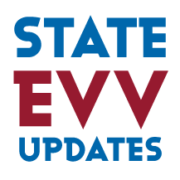Who Approves Alternative EVV Systems?
Providers who supposedly have the freedom to choose alternative EVV vendors over state systems are starting to wonder whether the process is actually feasible.
Some states have chosen a “hybrid” implementation model, in which providers may use the free state-contracted system or another system that meets requirements. This solution serves to mollify providers who are unhappy with the state system, but some of those providers find it nearly impossible to get an alternative system approved.
 Ohio, for example, has a contract with Sandata to provide a state-wide EVV solution beginning January 2018. The state claims providers can use their own vendor instead of Sandata. However, providers who start that process are connected with a Sandata representative. The state offers an “EVV Provider Hotline” which directs to Sandata. Emails to EVV@medicaid.ohio.gov receive replies from Sandata. In other words, Sandata has the ultimate power to approve or deny competing vendors.
Ohio, for example, has a contract with Sandata to provide a state-wide EVV solution beginning January 2018. The state claims providers can use their own vendor instead of Sandata. However, providers who start that process are connected with a Sandata representative. The state offers an “EVV Provider Hotline” which directs to Sandata. Emails to EVV@medicaid.ohio.gov receive replies from Sandata. In other words, Sandata has the ultimate power to approve or deny competing vendors.
 The situation in Texas is similar. DataLogic Vesta, which operates the statewide system, must approve any alternative EVV system that providers want to use. Will DataLogic Vesta’s profits suffer if it approves alternative vendors? If so, will the company let any other vendor take away its customers without an extremely burdensome process?
The situation in Texas is similar. DataLogic Vesta, which operates the statewide system, must approve any alternative EVV system that providers want to use. Will DataLogic Vesta’s profits suffer if it approves alternative vendors? If so, will the company let any other vendor take away its customers without an extremely burdensome process?
Lack of Clarity in Some States
Many other states do not clarify which organization or agency approves alternative vendors. In Louisiana, Florida, Indiana, and Nebraska, alternative EVV systems must integrate with the statewide system. It is not yet clear how straightforward the integration requirements are.
 The difficulty in predicting problems providers might face is that each state implements EVV in a different way, even if it uses the same vendor as another state. Colorado, like Ohio, has a contract with Sandata for a statewide EVV system, but that doesn’t necessarily mean the situation is identical. Colorado says providers are free to use any EVV system they choose, as long as it meets federal guidelines and is capable of communicating with Sandata through a data aggregator. The state does not specify whether Sandata needs to approve the alternate system.
The difficulty in predicting problems providers might face is that each state implements EVV in a different way, even if it uses the same vendor as another state. Colorado, like Ohio, has a contract with Sandata for a statewide EVV system, but that doesn’t necessarily mean the situation is identical. Colorado says providers are free to use any EVV system they choose, as long as it meets federal guidelines and is capable of communicating with Sandata through a data aggregator. The state does not specify whether Sandata needs to approve the alternate system.
Good Examples of Provider Choice
 A few states appear to have a relatively easy approval process. Virginia declared that “Virginia Medicaid does not and will not approve EVV vendor systems…it is the responsibility of the provider to ensure that it meets Virginia Medicaid’s requirements.”
A few states appear to have a relatively easy approval process. Virginia declared that “Virginia Medicaid does not and will not approve EVV vendor systems…it is the responsibility of the provider to ensure that it meets Virginia Medicaid’s requirements.”
 Missouri says it will obtain “a vendor neutral aggregator system to compile all data” from providers’ various EVV systems. The aggregator system “will allow the state to maintain quality oversight while providing flexibility in vendor selection.”
Missouri says it will obtain “a vendor neutral aggregator system to compile all data” from providers’ various EVV systems. The aggregator system “will allow the state to maintain quality oversight while providing flexibility in vendor selection.”
Leave a Comment
Has your organization chosen to use an alternative vendor? What was your experience? Let us know in the comments!

 2018 MITC
2018 MITC 2018 MITC
2018 MITC